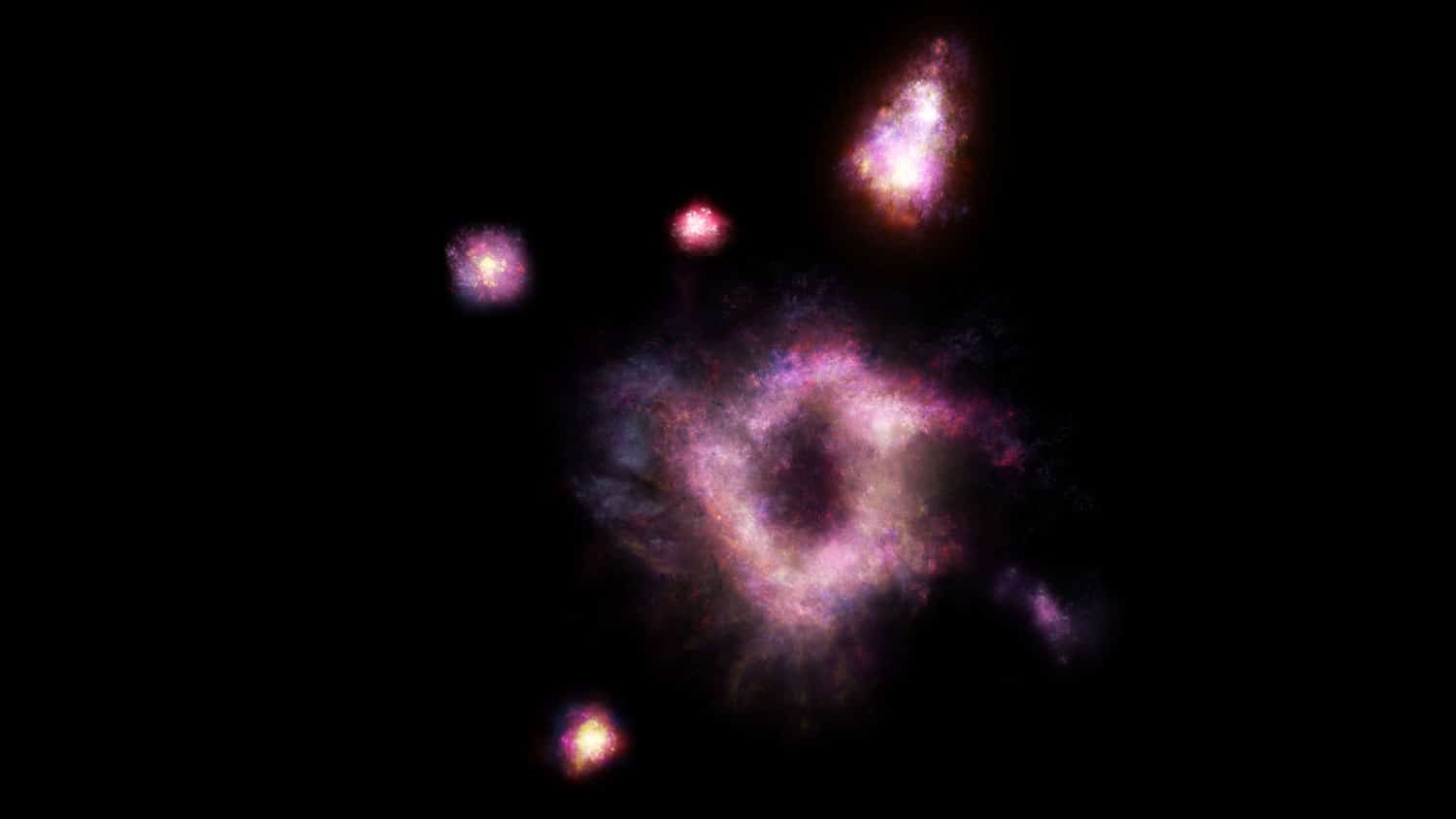
Astronomers have seen a very curious object that they never saw before. They recently captured an image of a super-rare type of galaxy named R5519, which lies 11 billion light-years from the Solar System.
The galaxy with the mass similar to the Milky Way, has a shape of a ring, rather like a titanic doughnut; thus astronomers dubbed it as a “cosmic ring of fire.” Its disclosure is set to stir up hypotheses about the earliest formation of galactic structures and how they develop.
It appears as a circle with a truly massive hole in the middle, with a diameter two billion times longer than the distance between the Earth and the Sun. In other words, it is three million times bigger than the diameter of the supermassive black hole in the galaxy Messier 87.
Dr. Tiantian Yuan, from Australia’s ARC Centre of Excellence for All-Sky Astrophysics in 3 Dimensions (ASTRO 3D), said, “It is making stars at a rate 50 times greater than the Milky Way. Most of that activity is taking place on its ring – so it truly is a ring of fire.”
Astronomers used the spectroscopic data gathered by the WM Keck Observatory in Hawaii. They captured images using NASA’s Hubble Space Telescope to identify the unusual structure.
ASTRO 3D co-author, Dr. Ahmed Elagali, based at the International Centre for Radio Astronomy Research in Western Australia, said, “studying R5519 would help determine when spiral galaxies began to develop.”
“Further, constraining the number density of ring galaxies through cosmic time can also be used to put constraints on the assembly and evolution of local-like galaxy groups,” he added.
Another co-author, Professor Kenneth Freeman from the Australian National University, said, “the discovery had implications for understanding how galaxies like the Milky Way formed.”
“The collisional formation of ring galaxies requires a thin disk to be present in the ‘victim’ galaxy before the collision occurs.”
“The thin disk is the defining component of spiral galaxies: before it assembled, the galaxies were in a disorderly state, not yet recognizable as spiral galaxies.”
“In the case of this ring galaxy, we are looking back into the early universe by 11 billion years, into a time when thin disks were only assembling. For comparison, the thin disk of our Milky Way began to come together only about nine billion years ago. This discovery is an indication that disk assembly in spiral galaxies occurred over a more extended period than previously thought.”
The evidence suggests it is a type known as a “collisional ring galaxy,” making it the first one ever located in the early Universe. In the nearby “local” Universe, they are 1000 times rarer than the internally created type. Images of the much more distant R5519 stem from about 10.8 billion years ago, just three billion years after the Big Bang. They indicate that collisional ring galaxies have always been extremely uncommon.
Journal Reference:
- Dr Tiantian Yuan et al., A giant galaxy in the young universe with a massive ring. DOI: 10.1038/s41550-020-1102-7
"type" - Google News
May 26, 2020 at 03:13PM
https://ift.tt/3gqrKdo
Astronomers captured a super-rare type of galaxy - Tech Explorist
"type" - Google News
https://ift.tt/2WhN8Zg
https://ift.tt/2YrjQdq
Bagikan Berita Ini














0 Response to "Astronomers captured a super-rare type of galaxy - Tech Explorist"
Post a Comment